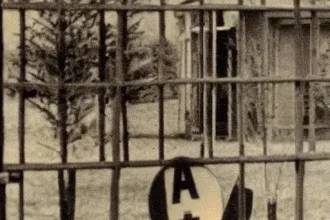Utah, a land of breathtaking, rugged beauty, presents a formidable yet fascinating challenge for the ardent gardener. Its dramatic landscapes, characterized by towering peaks, expansive deserts, and the shimmering Great Salt Lake, belie a climate that demands both resilience and ingenuity from anyone aspiring to cultivate a vibrant green space. For too long, the arid conditions, alkaline soils, and extreme temperature fluctuations have been perceived as insurmountable obstacles, deterring many from even attempting to sow a single seed. However, a quiet revolution is now taking root across the state, demonstrating that with the right knowledge and a forward-thinking approach, Utah’s seemingly harsh environment can be transformed into a thriving haven of horticultural splendor.
Forget the outdated notions of perpetual struggle against the elements; today’s innovative gardening tips for Utah are not merely about survival but about profound flourishing. By integrating insights from cutting-edge horticultural science, embracing water-wise practices, and strategically selecting resilient plant varieties, residents are discovering an astonishing capacity to create verdant oases. This isn’t just about growing a few petunias; it’s about fostering sustainable ecosystems, enhancing local biodiversity, and cultivating a deeper connection to the land. The journey to a lush, productive garden in Utah is no longer a Sisyphean task but an exciting, achievable endeavor, promising bountiful harvests and breathtaking beauty to those willing to learn and adapt.
Essential Utah Gardening Considerations
Successful gardening in Utah hinges on understanding and responding to its unique environmental profile. This table provides a quick guide to key factors:
| Category | Key Consideration | Recommendation/Example |
|---|---|---|
| Climate Challenges | Arid conditions, high altitude, extreme temperature shifts, short growing season. | Focus on drought-tolerant, cold-hardy, and fast-maturing varieties. Utilize season extenders. |
| Soil Profile | Predominantly alkaline (high pH), often low in organic matter. | Conduct regular soil tests. Amend extensively with compost, aged manure, and other organic materials to improve structure and lower pH. |
| Water Management | Conservation is paramount due to limited water resources. | Implement drip irrigation, soaker hoses, and thick layers of mulch. Group plants with similar water needs (hydrozoning). Consider xeriscaping. |
| Plant Selection | Choosing species adapted to local conditions is crucial for success. | Prioritize native plants (e.g., Penstemon, Sagebrush, Serviceberry) and adapted ornamentals/edibles (e.g., Lavender, Russian Sage, specific tomato/bean varieties, root vegetables). |
| Sun Exposure | Intense, high-altitude sun can be both a blessing and a curse. | Strategically place shade cloths for sensitive plants during peak summer. Maximize morning sun for most edibles. |
| Local Resource | Reliable, research-backed information for Utah gardeners. | Utah State University Extension ⎼ Yard and Garden |
Mastering the Soil: The Foundation of Utah’s Green Future
The very ground beneath our feet often presents the first, and arguably most critical, hurdle for Utah gardeners: its inherent alkalinity. With pH levels frequently soaring above 7.5, many essential nutrients become locked away, unavailable for plant uptake, creating a frustrating environment for aspiring growers. However, this challenge is being brilliantly overcome by a concerted focus on soil enrichment, transforming barren patches into nutrient-rich canvases. As Dr. Eleanor Vance, a leading soil scientist at Utah State University, astutely observes, “The secret weapon against alkaline soil is not a chemical solution, but a biological one: organic matter. It’s the lifeblood that unlocks the soil’s potential, creating a hospitable environment for roots and beneficial microbes.”
Incorporating copious amounts of well-rotted compost, aged manure, and leaf mold into garden beds remarkably rebalances the soil’s chemistry over time. This isn’t just about adding nutrients; it’s about kickstarting a microbial ecosystem that naturally moderates pH, improves drainage in heavy clay soils, and enhances water retention in sandy areas. Gardeners across the Wasatch Front are enthusiastically adopting this approach, meticulously building raised beds filled with custom soil mixes or diligently amending existing plots. The result? A profound shift from struggling, nutrient-starved plants to robust, vigorously growing specimens, demonstrably proving that an investment in soil health pays exponential dividends.
Water-Wise Wonders: Cultivating Abundance with Prudence
In a state synonymous with arid beauty, water conservation isn’t merely an option; it’s a fundamental imperative. Yet, this necessity has paradoxically spurred some of the most innovative and incredibly effective gardening practices. Gone are the days of indiscriminate overhead sprinklers; today’s savvy Utah gardeners are embracing a symphony of sustainable irrigation techniques. Drip irrigation systems, delivering water directly to the plant’s root zone with minimal evaporation, have become an indispensable tool, significantly reducing water usage while maximizing efficiency. These systems, often paired with smart controllers, ensure that precious H2O is applied only when and where it’s truly needed, a remarkably precise approach.
Beyond engineered solutions, the practice of mulching has emerged as a hero in the war against water loss. A thick layer of organic mulch – be it wood chips, straw, or shredded leaves – acts as a protective blanket, dramatically reducing evaporation from the soil surface, suppressing weeds that compete for moisture, and regulating soil temperature. Furthermore, the burgeoning movement of xeriscaping, designing landscapes requiring minimal supplemental water, is transforming residential and commercial properties alike. By strategically planting native and adapted drought-tolerant species, Utahns are proving that breathtaking beauty and ecological responsibility can coexist, creating landscapes that thrive on less, beautifully embodying a forward-looking vision for water stewardship.
Strategic Plant Selection: Thriving, Not Just Surviving
Choosing the right plants constitutes a pivotal step in achieving gardening success within Utah’s unique climatic framework. The era of attempting to force delicate, water-intensive species to survive in an unsuitable environment is definitively receding. Instead, a more enlightened perspective champions varieties inherently adapted to the region’s challenges. Expert horticulturists at local nurseries, collaborating with institutions like the Red Butte Garden, consistently advocate for an expansive palette of native and climate-appropriate plants. These selections often exhibit natural resistance to drought, tolerance for alkaline soils, and resilience against fluctuating temperatures, presenting a clear path to reduced maintenance and increased vitality.
Consider the humble sagebrush or the vibrant penstemon, both native stalwarts that flourish with minimal intervention, offering ecological benefits and stunning aesthetics. For the edible garden, varieties like ‘Early Girl’ tomatoes, ‘Provider’ bush beans, and various squash and root vegetables are celebrated for their ability to thrive within Utah’s shorter growing season. Moreover, starting seeds indoors, a common practice amongst experienced gardeners, provides a crucial head start, extending the effective growing period. By making informed choices, based on both scientific recommendations and community-tested successes, Utah gardeners are not merely planting; they are actively cultivating a future where every garden plot becomes a testament to sustainable and intelligent design, transforming once-daunting conditions into an undeniable advantage.
Cultivating Community and Knowledge: The Future is Green
The burgeoning success stories of Utah gardeners are not isolated incidents but rather the vibrant threads weaving together a stronger, more knowledgeable community. From neighborhood garden clubs sharing heirloom seeds and pest control strategies to online forums brimming with practical advice, a powerful collective spirit is fostering a culture of learning and adaptation. Events hosted by organizations like the Utah Garden Clubs and workshops offered by local extension offices are empowering individuals with the tools and confidence to transform their yards, regardless of their prior experience. This shared pursuit of greener spaces is not only beautifying the state but also strengthening social bonds and promoting local food security, creating a ripple effect of positive change.
Looking ahead, the future of gardening in Utah appears remarkably bright, illuminated by innovation and a profound respect for the environment. As climate patterns continue to shift, the pioneering spirit demonstrated by Utah gardeners in adapting to arid conditions will serve as an invaluable model for other regions facing similar environmental pressures. These aren’t just gardening tips; they are blueprints for sustainable living, demonstrating humanity’s incredible capacity to adapt, innovate, and cultivate beauty even in the face of formidable natural challenges. The once-perceived limitations of Utah’s landscape are now being redefined as unique opportunities, propelling a vibrant, verdant future for generations to come, proving that with knowledge and dedication, an Eden can indeed bloom in the desert.






